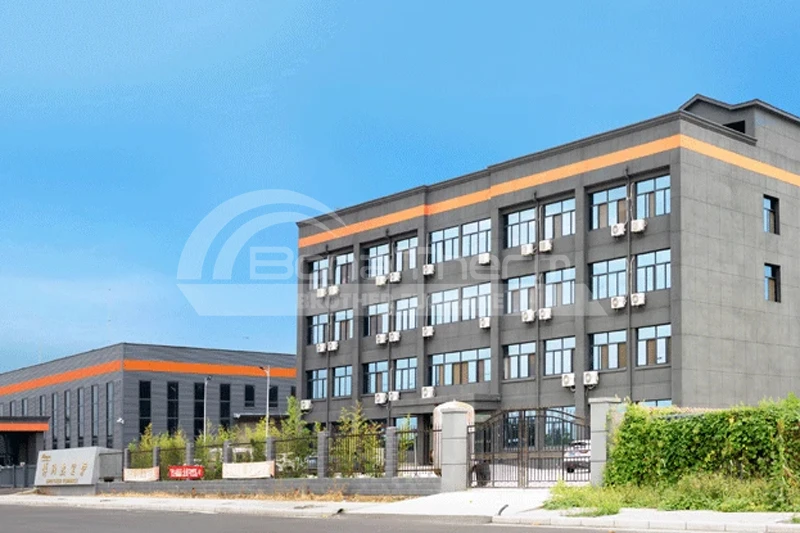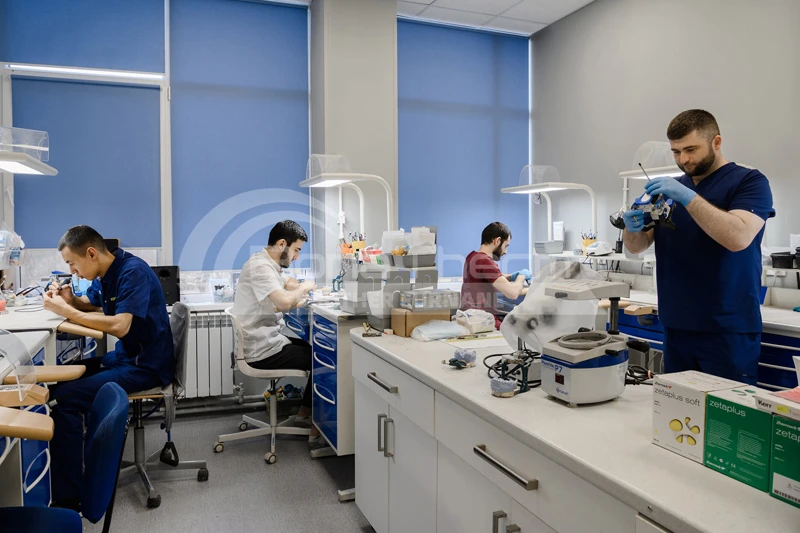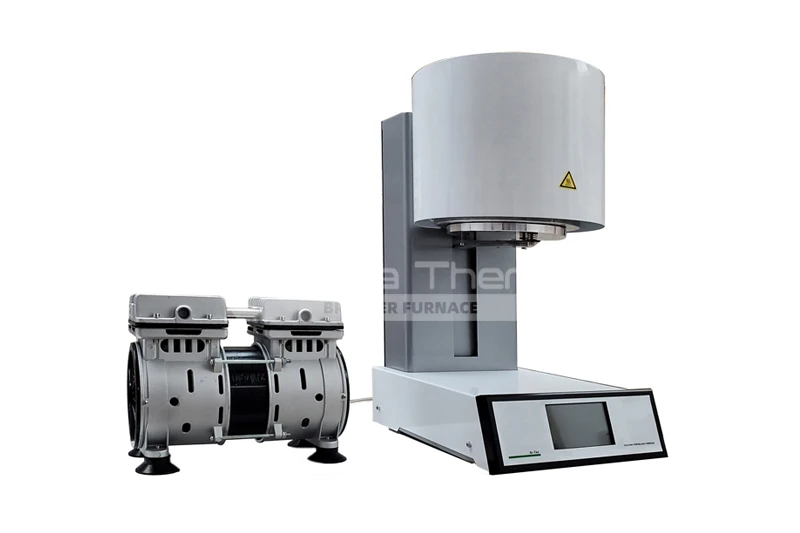How to Choose the Right Laboratory Zirconia Sintering Furnace
When it comes to advanced materials processing, particularly in the field of
zirconia processing, choosing the right equipment is crucial. One such piece of
equipment that plays an essential role in various laboratory and industrial
applications is the laboratory zirconia sintering furnace.
These furnaces are vital for achieving the necessary properties in zirconia ceramics, such as strength, stability, and density. Whether you are in a research laboratory, a dental practice, or a manufacturing setting, selecting the proper sintering furnace can directly affect the quality of your results.
In this guide, Brother Furnace will walk you through the key considerations when choosing a zirconia sintering furnace, from temperature control to energy efficiency, ensuring that you make an informed and optimal decision.
Understanding Zirconia Sintering Furnaces
Before diving into the selection process, it’s important to understand what a zirconia sintering furnace is and how it functions. A laboratory zirconia sintering furnace is a specialized high-temperature furnace designed to process zirconia materials, which are commonly used in applications such as dental implants, cutting tools, and wear-resistant parts.
The sintering process involves heating the zirconia powder to a temperature
where it fuses into a solid form, increasing its strength and stability.
The furnace’s role in this process is to provide the necessary thermal environment for uniform heat treatment. Achieving the correct sintering temperature range is crucial for the process’s success, and homogeneous temperature distribution within the furnace is necessary to ensure even sintering of the material.
Key Components and Technology Involved
Heating Elements: These furnaces are equipped with specialized heating elements such as molybdenum disilicide furnaces or silicon carbide furnaces. Both types offer high resistance to oxidation and can withstand extremely high temperatures, which are crucial for sintering zirconia effectively.
Temperature Control: Temperature control is one of the most critical features in a zirconia sintering furnace. The furnace must maintain a stable, controlled temperature to ensure consistent sintering of the zirconia material. Some high-end models feature precision temperature control systems that allow for fine adjustments to ensure the sintering process is carried out under ideal conditions.
Furnace Size and Capacity: Depending on the laboratory’s needs, the furnace size and capacity should be selected accordingly. Smaller furnaces are ideal for research and smaller batches, while larger models are better suited for commercial production environments. The furnace's interior must be large enough to accommodate the zirconia pieces being sintered.
Key Factors to Consider When Choosing a Furnace
When it comes to selecting the right laboratory zirconia sintering furnace,
several important factors must be considered to ensure that it meets both
technical and operational requirements. Below are the most important
considerations:
Sintering Temperature Range
Zirconia sintering typically requires temperatures ranging from 1300°C to 1600°C, depending on the specific material properties and intended use. The furnace should have a sintering temperature range that accommodates the type of zirconia you are working with. A furnace that can reliably reach and maintain the required temperature range will result in better sintering outcomes and improved material properties.
Furnace Size and Capacity
The size and capacity of the furnace are critical factors to consider based on your laboratory's scale of operations. For laboratories with high throughput or those working on larger batches of zirconia material, a larger furnace with greater capacity will be necessary.
Smaller laboratories, on the other hand, may benefit from a compact tube furnace or a smaller laboratory furnace that is better suited to limited space and lower volume requirements. Always ensure that the furnace size aligns with your specific processing needs.
Type of Heating Elements
The heating elements in a zirconia sintering furnace play a significant role in its performance. Molybdenum disilicide and silicon carbide are commonly used due to their ability to withstand high temperatures and their excellent oxidation resistance.
Molybdenum disilicide furnaces are particularly effective for
high-temperature operations, while silicon carbide furnaces offer better energy
efficiency and can be more cost-effective in some applications. The choice of
heating element will depend on your laboratory’s temperature requirements,
material specifications, and budget considerations.
Energy Efficiency and Cost Considerations
Energy consumption is another key consideration when selecting a zirconia sintering furnace. High temperatures and prolonged sintering cycles can lead to significant energy usage, so opting for an energy-efficient furnace can help reduce operational costs in the long term.
Modern furnaces are designed with better insulation and advanced heating technologies to minimize energy loss. Furthermore, a more energy-efficient furnace will also help your laboratory meet sustainability goals.
Reliability and Durability
Furnace reliability and durability are critical for consistent performance in a laboratory setting. Look for furnaces that are built to last with high-quality materials and advanced engineering.
Consider reviews and feedback from other customers to assess whether the furnace can handle continuous use, and check if the manufacturer offers strong after-sales support, including warranties and maintenance services.
Comparing Different Models and Brands
When choosing a laboratory zirconia sintering furnace, it’s essential to explore various models and brands to ensure that you select the best fit for your laboratory. Here are a few factors to consider when comparing different options:
Brand Reputation: Established manufacturers such as Brother Furnace have a
strong reputation for providing high-quality, durable furnaces designed for
precision sintering applications. Look for brands known for their expertise in
laboratory furnaces and zirconia sintering applications.
Furnace Features: Different models may come with additional features such as automated temperature control, programmable sintering cycles, and data logging capabilities. These features can improve your laboratory's efficiency and ensure reproducible results.
Sintering Furnace Reviews: Reading reviews and testimonials from other laboratory professionals can provide valuable insights into the furnace's performance, ease of use, and reliability. Focus on user feedback that highlights the furnace’s capabilities for zirconia processing and its overall cost-effectiveness.
Tips for Making the Right Choice
Choosing the right zirconia sintering furnace requires careful consideration of your specific laboratory needs. Below are a few tips to help you make an informed decision:
Assess Your Specific Needs: Consider the materials you will be sintering, the scale of your operation, and any other unique requirements your laboratory may have. This will help you choose a furnace that best aligns with your goals.
Consult with Experts or Manufacturers: If you are unsure about the best model, don’t hesitate to reach out to the manufacturer. At Brother Furnace, our team of experts can guide you in selecting the best sintering furnace for zirconia-based on your application.
Consider Long-Term Investment: While it may be tempting to choose the most
budget-friendly option, remember that a high-quality furnace is a long-term
investment. Opting for a furnace that offers durability, energy efficiency, and
reliability can save you money over time.
Conclusion
In conclusion, choosing the right laboratory zirconia sintering furnace is a critical decision for any laboratory working with zirconia materials. Key factors such as temperature control, furnace size, energy efficiency, and heating elements should be carefully evaluated to ensure optimal performance.
Brands like Brother Furnace offer a wide range of precision temperature control furnaces that can be tailored to meet the specific requirements of your laboratory.
By considering the information provided in this guide, you will be well-equipped to select the best sintering furnace for zirconia that meets your laboratory’s needs, maximizes productivity, and ensures high-quality results. Brother Furnace is committed to providing top-of-the-line sintering furnace solutions that are engineered for precision, reliability, and long-term performance.
Make an informed decision today and invest in a laboratory zirconia sintering furnace that will serve your laboratory's sintering needs for years to come. Contact Brother Furnace for more information and to discuss your unique requirements.





